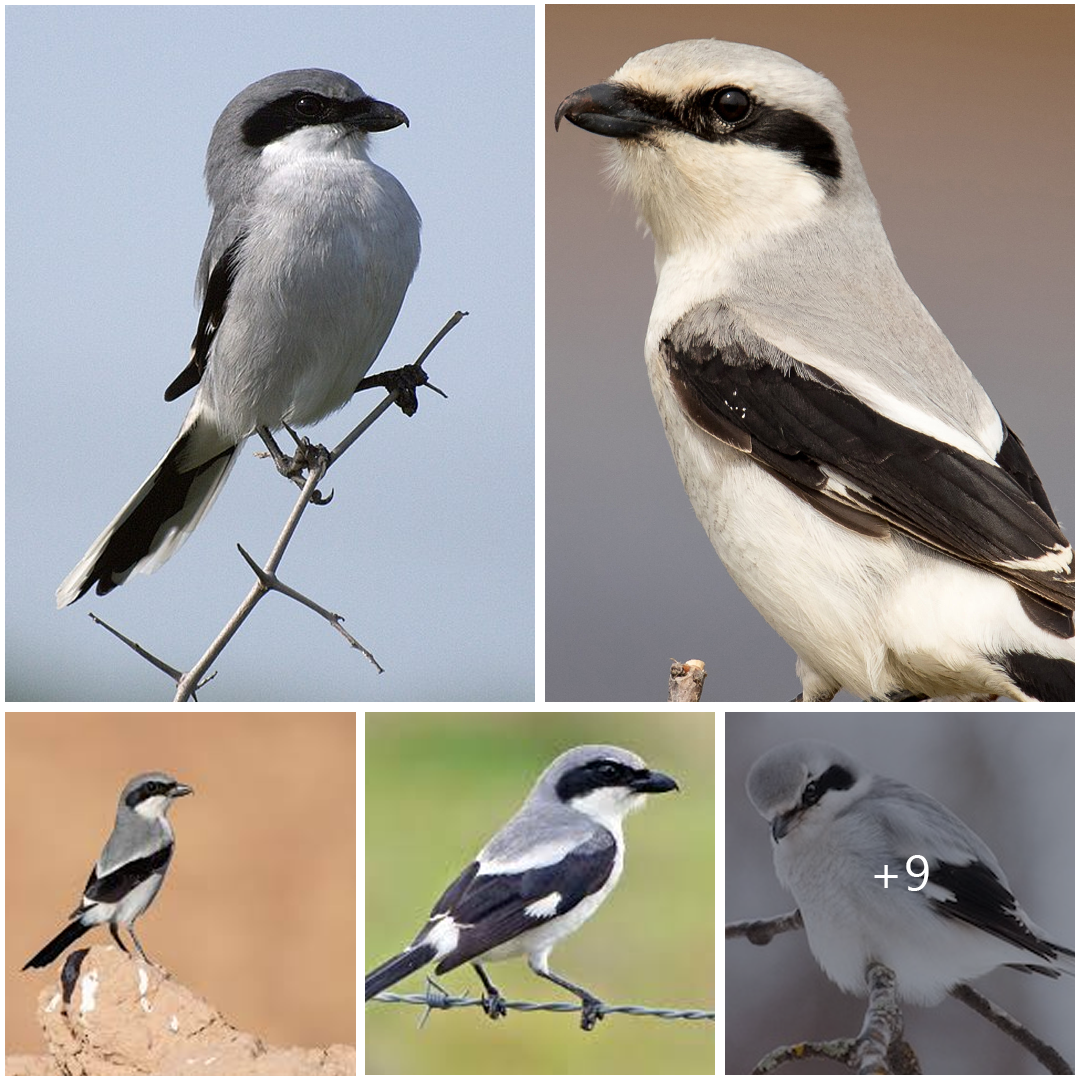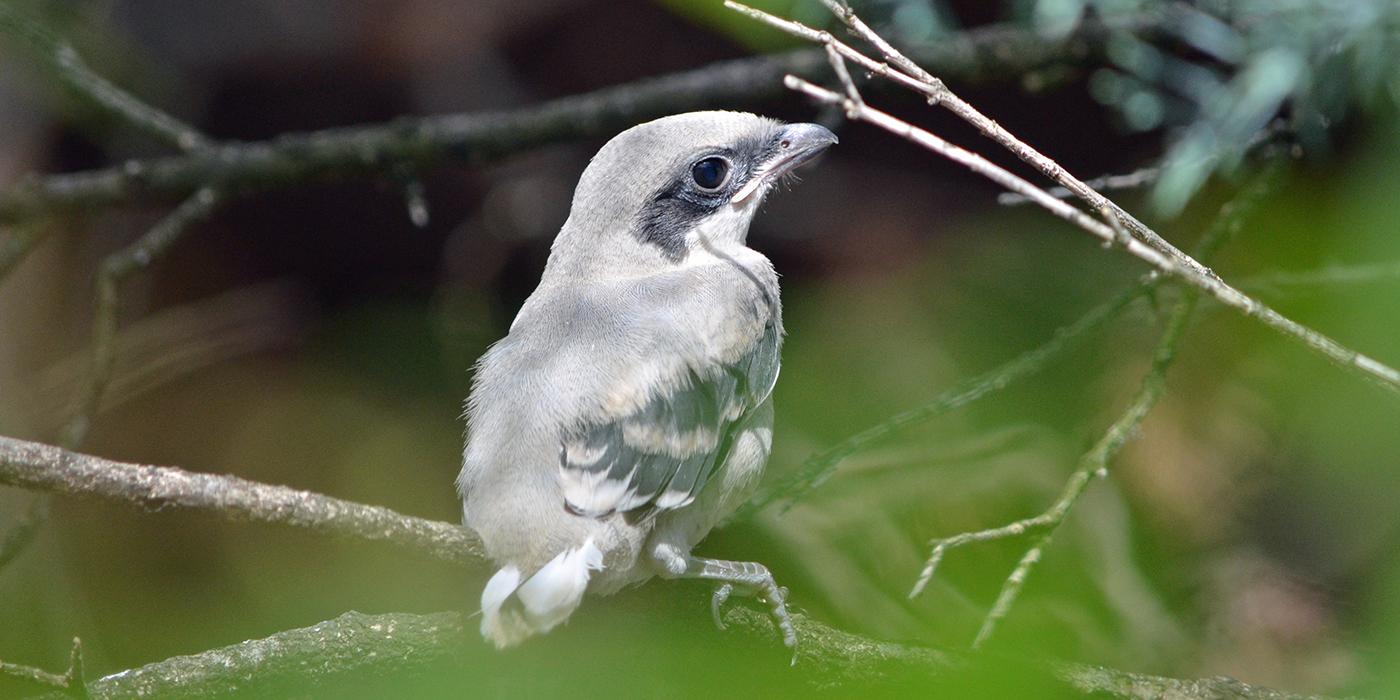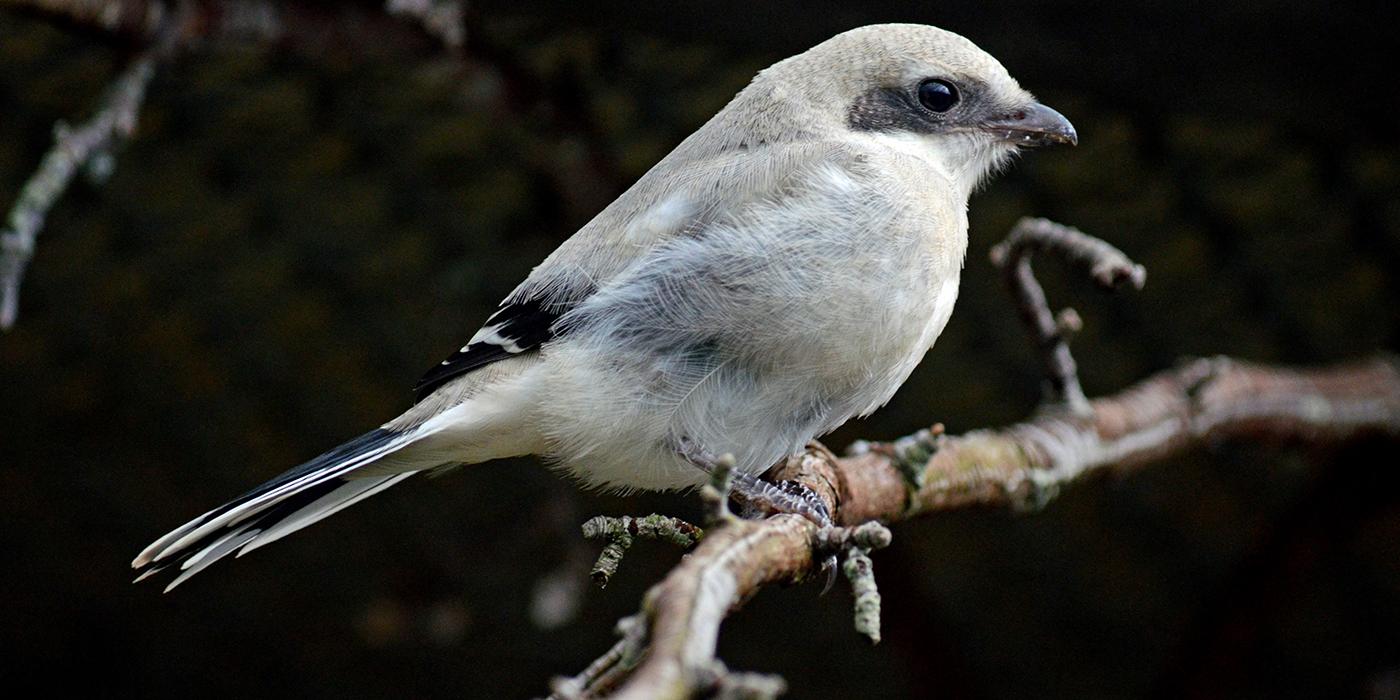
Loggerhead shrikes are still numerous in some areas of North America (particularly the south and west), but their populations have fallen sharply over the past half-century. The Loggerhead is listed as threatened or endangered in 14 states and endangered in Canada. Populations have experienced long-term declines throughout most of the eastern and mid-western United States. There are thought to be less than 100 loggerhead shrikes left in Virginia. The last known breeding pair at the Smithsonian Conservation Biology Institute nested in the crane yards in 1992.
Reasons for the decline of loggerhead shrikes are poorly understood. Although a specific cause or causes have not been determined, it has been hypothesized that changes in habitat loss due to land-use and farming practices could be factors. The transition from small farm fields with brushy vegetation and trees along fencerows—which provided nesting sites and hunting perches—to larger intensive farms with fewer fencerows and scattered trees could contribute to population declines.
In addition, the replacement of native, warm-season grasses with cool-season species may be partially to blame. The species’ decline coincides with the introduction and increased use of chemical pesticides between the 1940s and 1970s, and may result in part from the birds’ ingestion of pesticide-laced prey from treated fields.

Other likely causes of population decline include collision with vehicles, urban development, conversion of hayfields and pastureland, decimation of hedgerows, habitat destruction by surface-coal strip-mining and altering of prey populations by livestock grazing. However, in Virginia, many territories that were historically occupied by breeding pairs are no longer used, despite habitat conditions that appear unchanged. Given this bird’s potentially high reproductive rate, and provided that adequate habitat continues to be available, loggerhead shrike populations may be able to recover if the causes of their decline can be identified and eliminated.
Loggerhead Shrikes at the Smithsonian Conservation Biology Institute
This species of shrike has been known to breed at the Smithsonian Conservation Biology Institute site, but none have been seen on the grounds since 1992. With the development of Virginia Working Landscapes and a strong interest from the community in restoring grasslands for native biodiversity, the shrike program will serve as an opportunity to contribute to understanding grassland bird population declines and to play a role in conserving a threatened species locally.
SCBI is strongly positioned to contribute to cross-disciplinary studies and conservation of the loggerhead shrike, integrating its expertise in the disciplines of husbandry science, ecology, reproduction, veterinary medicine, behavior and genetics. Scientists have partnered with a Canadian breeding program with the goal of reintroduction. They plan to use geographic information systems (GIS) on the reintroduced population to look at habitat preference and hopefully gain a better understanding of their decline. The knowledge gained would enable SCBI to offer scientifically based conservation action plans to state agencies and concerned individuals and will have broader implications to other declining grassland bird species.






